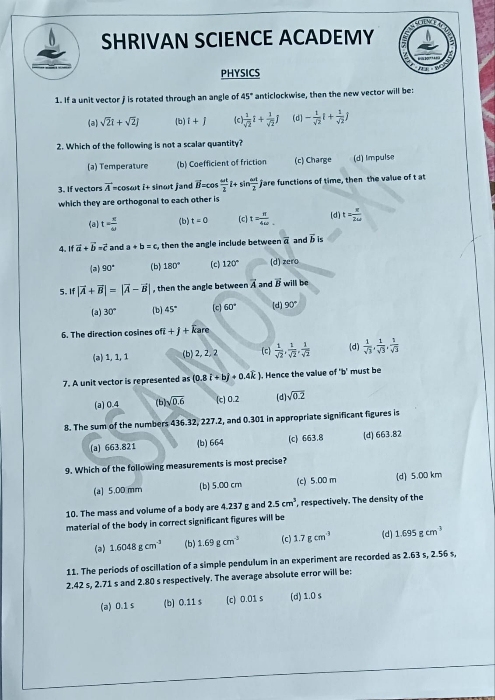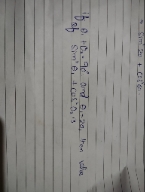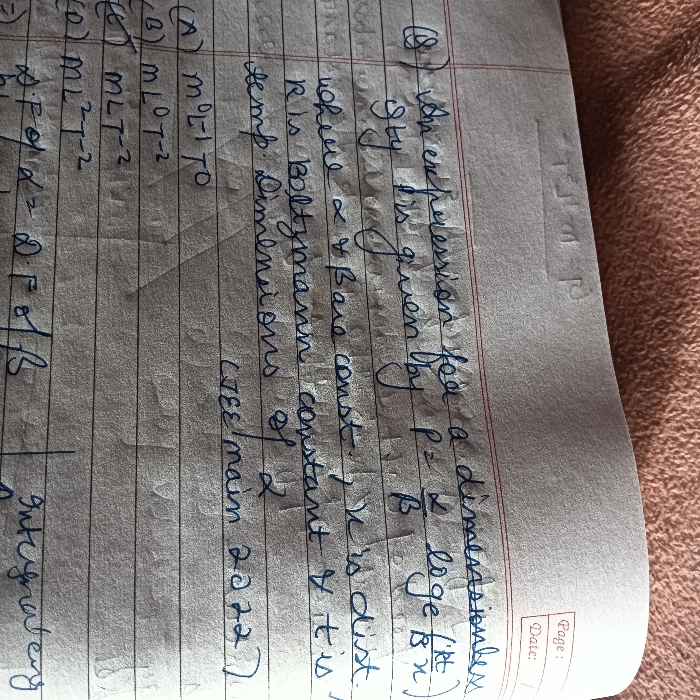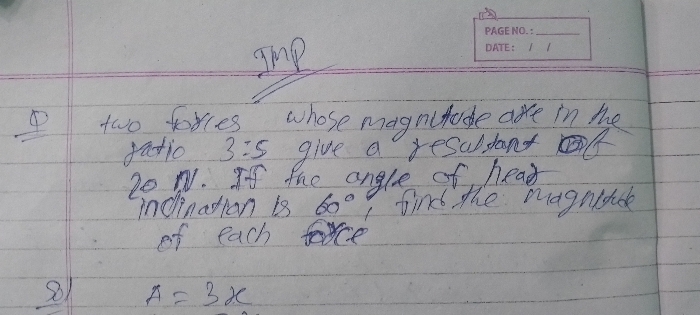CBSE Class 11-science Answered
The frequency f of vibration of stretched string depends on its length L, its mass per unit length M and the tension T ,in the string obtain dimensionally an expression for frequency f.
Asked by tps.mjmdr | 08 Jul, 2018, 05:52: PM
The speed of a wave depends on the properties of the medium and is assumed to be independent of frequency and wavelength.
Each element of the string pulls on its neighbours with a force given by tension T in the string. The stronger the tension,
the greater the force between neighboring elements and the more rapidly any disturbance will propagate down the string.
Thus the wave speed should increase with increasing tension.
On the other hand, the inertia of each element limits how effective the tension will be in accelerating that element to move the
wave along the string. Thus for the same tension, the wave speed will be smaller in strings having more massive elements.
The mass of each small element can be given in terms of the mass density μ (mass per unit length ), which for a uniform string
is equal to its mass divided by its length. On the basis of these general principles we therfore expect
 ................(1)
................(1)where a and b are exponents that must be determined from the analysis.
Let us perform dimensional analysis for eqn.(1), 

hence we have a-b = 0; a+b = 1 and a=(1/2) , hence we get a = b = (1/2)
hence we rewrite eqn.(1) as 

where C is a non-dimensional constant. By performing mechanical analysis using newton's law it is found that C = 1;
hence we arrive the final formula for wave velocity 

frequency n = (v/λ ), where λ is wavelength
Answered by Thiyagarajan K | 13 Jul, 2018, 11:45: AM
CBSE 11-science - Physics
Asked by sheikhsaadat24 | 17 Apr, 2024, 09:41: PM
CBSE 11-science - Physics
Asked by sy123946 | 07 Apr, 2024, 04:23: PM
CBSE 11-science - Physics
Asked by derhebha955 | 03 Apr, 2024, 09:03: AM
CBSE 11-science - Physics
Asked by sumedhasingh238 | 29 Mar, 2024, 05:15: PM
CBSE 11-science - Physics
Asked by sumedhasingh238 | 28 Mar, 2024, 11:10: PM
CBSE 11-science - Physics
Asked by roshnibudhrani88 | 23 Mar, 2024, 05:52: PM
CBSE 11-science - Physics
Asked by emad.amd | 21 Mar, 2024, 12:00: PM
CBSE 11-science - Physics
Asked by vinitdubey7735 | 14 Mar, 2024, 11:21: AM
CBSE 11-science - Physics
Asked by om636694 | 04 Mar, 2024, 09:10: PM





